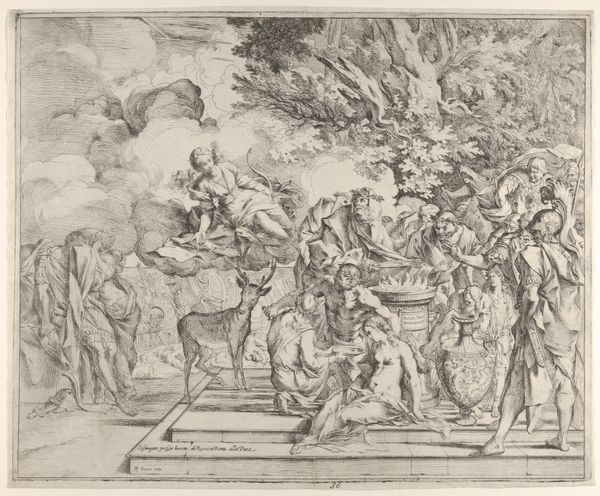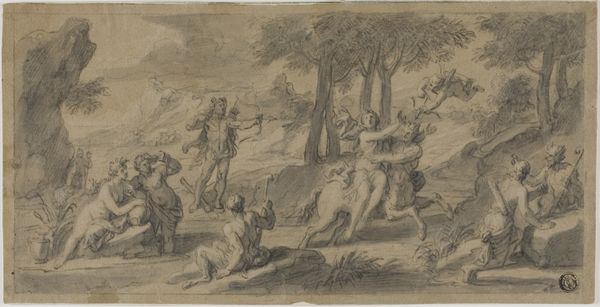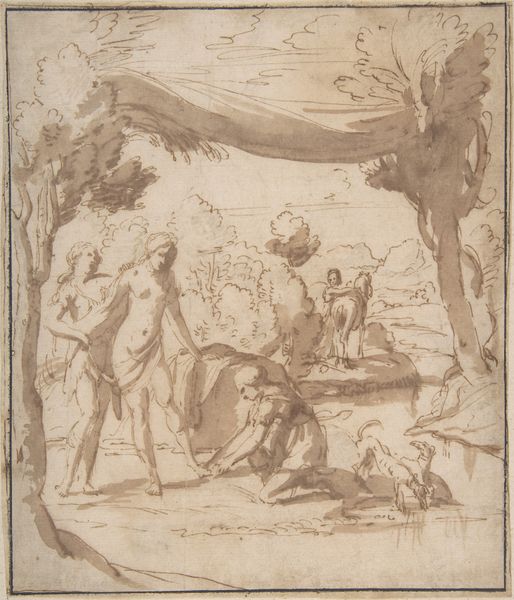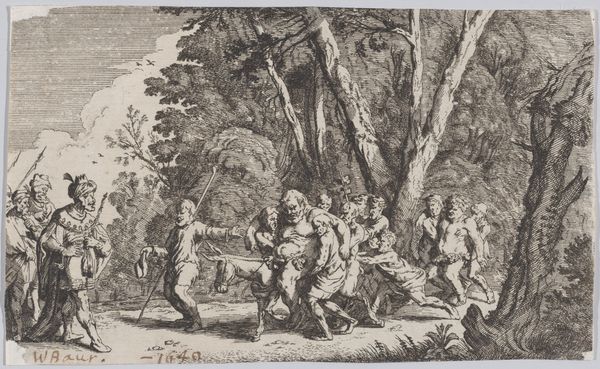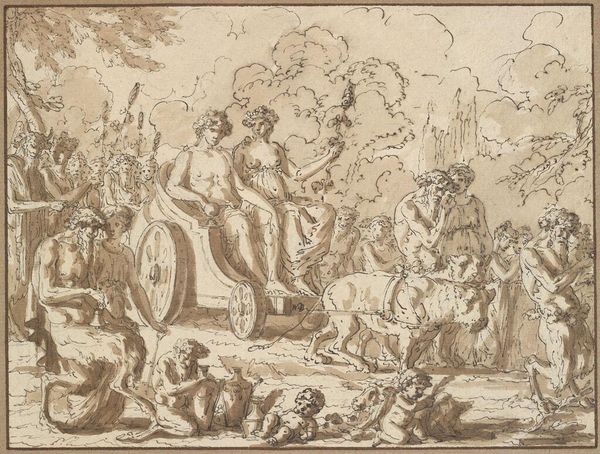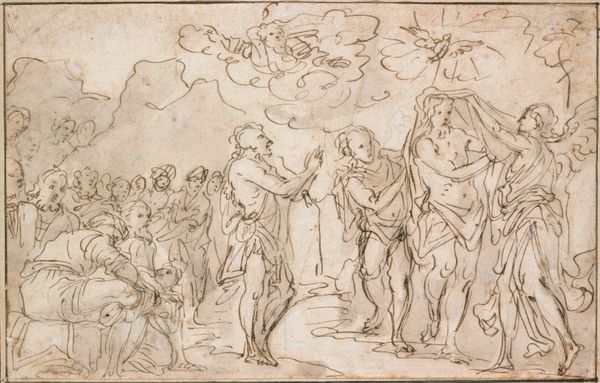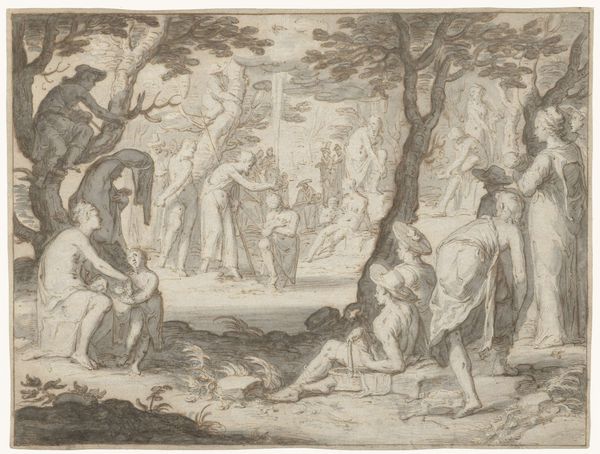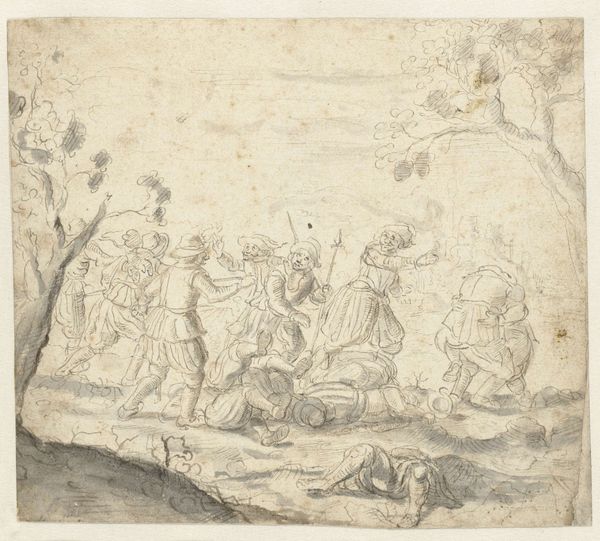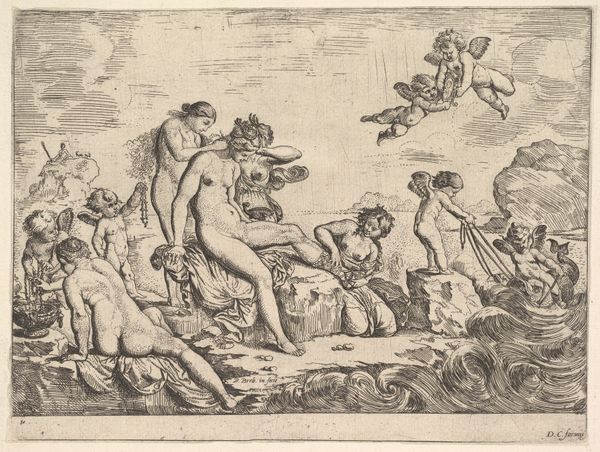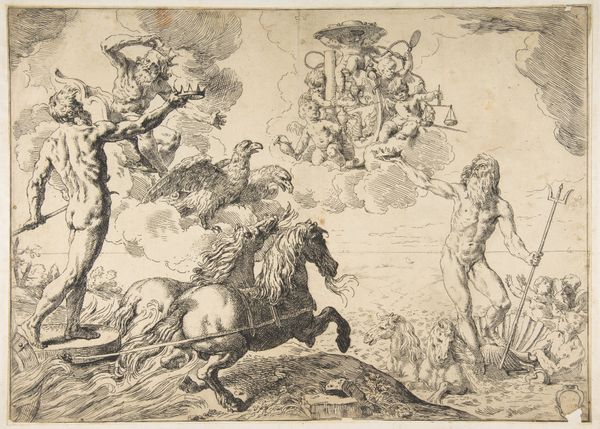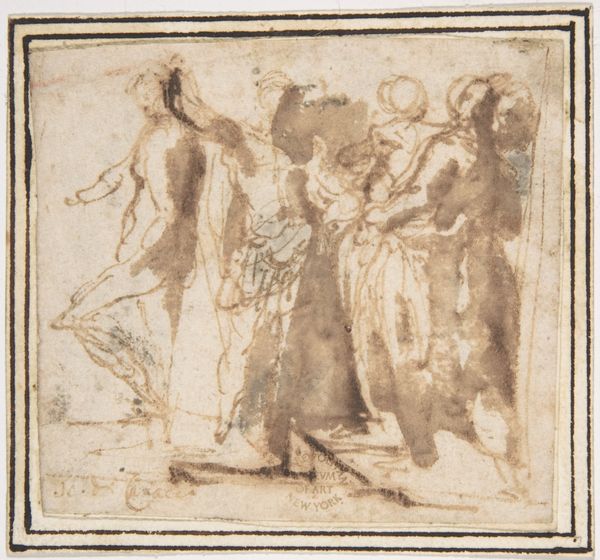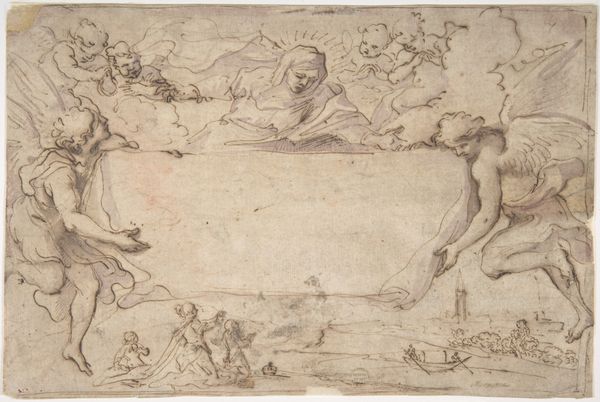
drawing, print, ink
#
drawing
#
allegory
#
baroque
# print
#
ink
#
history-painting
#
nude
#
watercolor
Dimensions: 6 1/4 x 7 15/16 in. (15.9 x 20.2 cm)
Copyright: Public Domain
Curator: Welcome. This is "Judgment of Paris," a 17th-century ink drawing from an anonymous artist, here at the Met. Editor: My first impression is… ethereal. It's an ink drawing, but it feels lighter than air. Are we looking at dreams, maybe? Curator: Possibly. The Judgment of Paris, from Greek mythology, presents a challenge. Paris, prince of Troy, must decide which goddess is fairest: Hera, Athena, or Aphrodite. Each offered him a bribe, revealing complicated relationships between power, wisdom, and desire. Editor: Ah, I see it now. Paris sits under the tree. And I recognize the traditional iconography—the peacock of Hera, Athena’s helmet, and Aphrodite’s, shall we say, disarming… presence. They all seem to offer something to Paris, don't they? Power, Victory, Love. This choice seems less about aesthetics and more about promises. Curator: Precisely. Consider the era in which this work was made. The power dynamics reflected within resonate deeply with patriarchal structures and expectations placed on men in positions of authority. And let’s not forget that this "judgment" directly triggers the Trojan War. There is an embedded critique of the costs and consequences of male ambition and the subjugation of female power. Editor: But there’s an idealized element too, right? A vision of classical beauty in an elegant setting. And then you see the gathering of the Gods on Olympus. A very potent visual representation of the unseen forces controlling mortals, but what of Cupid in the right corner? Are we supposed to sympathize with this vision? Or find ourselves disgusted with its excess? Curator: Perhaps the work implicates us in its ongoing relevance, questioning what remains from patriarchal social structures. What do we continue to perpetuate? How is "judgment" wielded today? Editor: True. By bringing this very old story into the 17th Century, the artist makes it reflect the world as it stood. It makes me want to re-examine symbols—what they promise and what they conceal. Curator: And by situating the work in the here and now, it invites us to dismantle old patterns of thought and behaviour. Editor: Quite so. An excellent, if disquieting, visual summary of the values and beliefs held then—and held now, too.
Comments
No comments
Be the first to comment and join the conversation on the ultimate creative platform.
